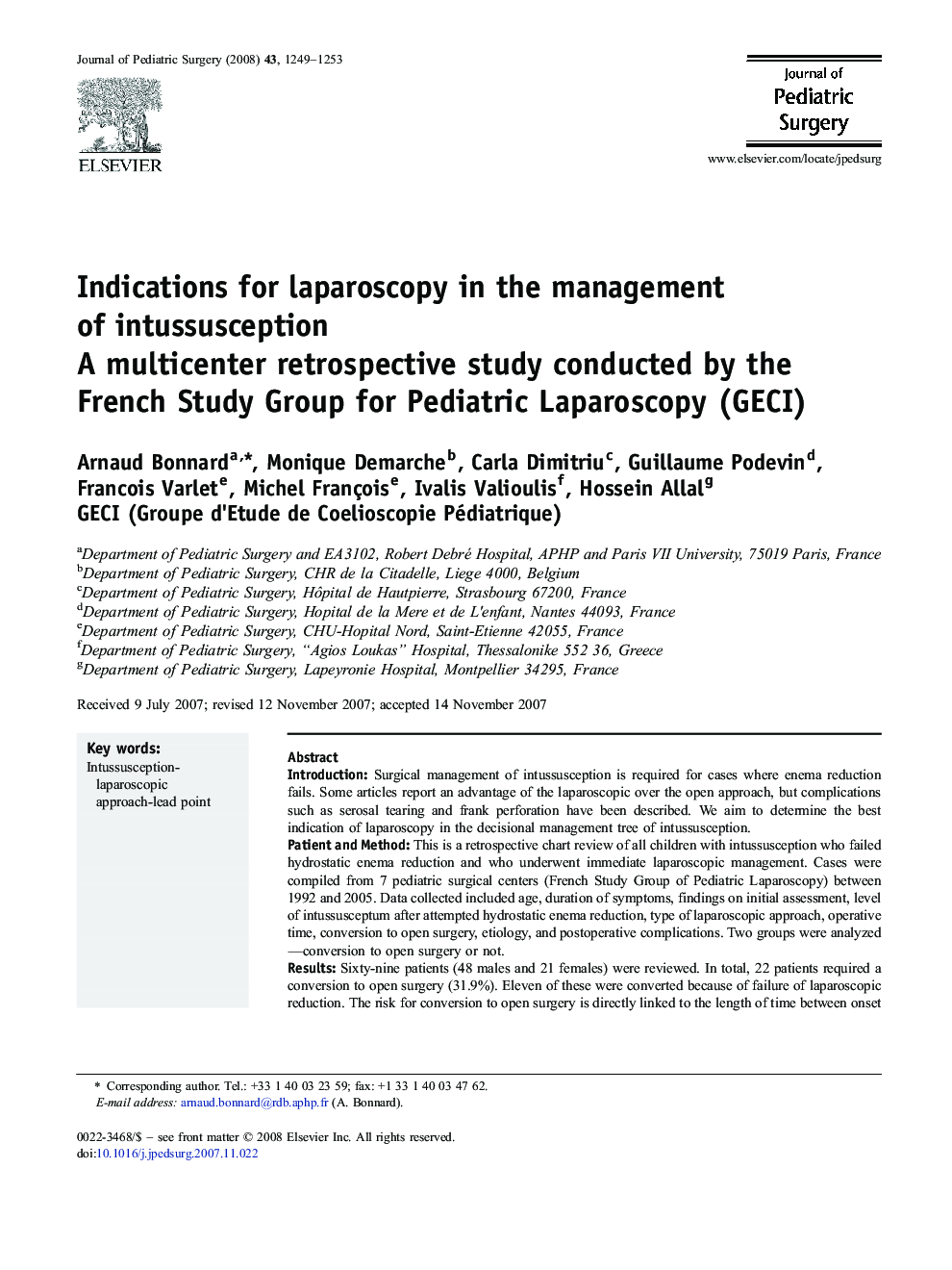| کد مقاله | کد نشریه | سال انتشار | مقاله انگلیسی | نسخه تمام متن |
|---|---|---|---|---|
| 4158867 | 1273818 | 2008 | 5 صفحه PDF | دانلود رایگان |

IntroductionSurgical management of intussusception is required for cases where enema reduction fails. Some articles report an advantage of the laparoscopic over the open approach, but complications such as serosal tearing and frank perforation have been described. We aim to determine the best indication of laparoscopy in the decisional management tree of intussusception.Patient and MethodThis is a retrospective chart review of all children with intussusception who failed hydrostatic enema reduction and who underwent immediate laparoscopic management. Cases were compiled from 7 pediatric surgical centers (French Study Group of Pediatric Laparoscopy) between 1992 and 2005. Data collected included age, duration of symptoms, findings on initial assessment, level of intussusceptum after attempted hydrostatic enema reduction, type of laparoscopic approach, operative time, conversion to open surgery, etiology, and postoperative complications. Two groups were analyzed—conversion to open surgery or not.ResultsSixty-nine patients (48 males and 21 females) were reviewed. In total, 22 patients required a conversion to open surgery (31.9%). Eleven of these were converted because of failure of laparoscopic reduction. The risk for conversion to open surgery is directly linked to the length of time between onset of symptoms and diagnosis (1.6 vs 3.1 days for conversion group, P = .048), the presence of signs of peritonitis on the initial clinical assessment (10.6% vs 41% in conversion group, P = .003), and the presence or absence of a pathologic lead point (17% vs 50% in conversion group, P = .004).ConclusionThe child seen early after the onset of symptoms (<1.5 days) with no signs of peritonitis is the best candidate for a laparoscopic approach in management of intussusception requiring surgery. Particular attention must be paid to not miss a pathologic lead point, especially as most tactile cues are lost.
Journal: Journal of Pediatric Surgery - Volume 43, Issue 7, July 2008, Pages 1249–1253